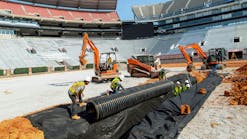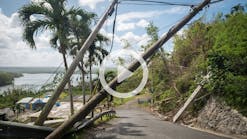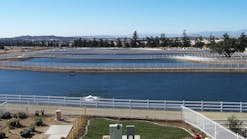Tampa & St. Petersburg, Florida, Avoid Sewage Incidents during Tropical Storm Elsa
Neither Tampa nor St. Petersburg, Florida, had any sewage incidents during Tropical Storm Elsa.
Both of these flood-prone cities have major issues with streets being closed down because of high water, according to Tampa Bay Times. Some parts of Tampa saw about 4 inches of rain after the storm, according to Axios News.
According to St. Petersburg Public Works Administrator Claud Tankersley, the 24-hour rainfall, depending on what area you were in the city, was anywhere from 2.5 to 4 inches, reported 10 Tampa Bay News.
According to the office of Mayor Rick Kriseman, St. Petersburg also avoided spills or having to inject polluted sewage into the aquifer via its injection wells after the storm, reported Tampa Bay Times. St. Petersburg previously pumped, dumped and spilled nearly 1 billion gallons of sewage before entering into a $350 million consent order with the state in 2017, and then millions more pumped down injection wells into the aquifer in 2018 and 2019.
“We had no overflows with Elsa. Zero. In large part due to improvements we’ve made since 2016,” said Brad Baird, Tampa’s deputy administrator for infrastructure, reported Tampa Bay Times.
Tampa had issues with pump stations losing power and causing overflows in 2016, as well as outdated pump stations and aging pipes. After these 2016 spills, former mayor Bob Buckhorn ordered his staff to fix the problem, and so a $5 million diversion project involving two miles of pressurized pipe and a revamped pump station on Perry Avenue in Riverside Heights was implemented, reported Tampa Bay Times.
This project successfully eliminated what used to be the city’s biggest sewage leaking liability, according to Baird, reported Tampa Bay Times. According to Baird, a heavy rain on July 3 resulted in nearly 1 million gallons of sewage being diverted.
Another smaller spill of about 58,000 gallons occurred in other parts of the city, however, added Baird.
Tampa bought dozens of portable generators and pumps to deploy at pump stations that lose power or become overwhelmed by high flows, and rebuilt key pump stations and other infrastructure, reported Tampa Bay Times. The removal of thousands of tons of trash that were clogging up the city’s main gravity lines also impacted the city’s ability to take on high flows.
All of these fixes cost somewhere in the range of $27 million, and will be accelerated under Mayor Jane Castor’s $2.9 billion, 20-year infrastructure plan approved by City Council in 2019, reported Tampa Bay Times. When considering pipe lining and other costs, the cost climbs to around $200 million.






